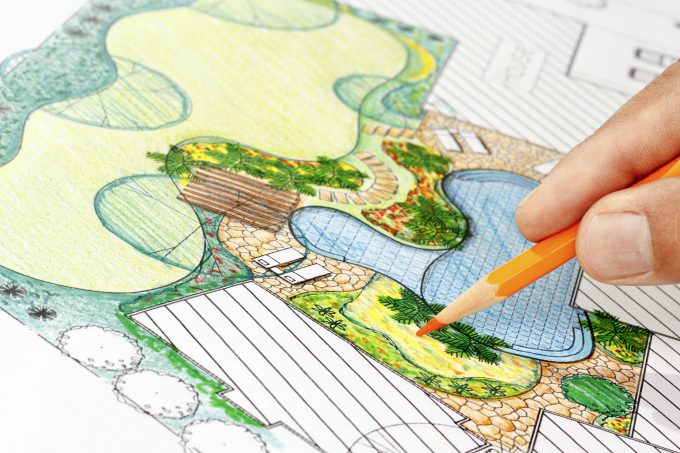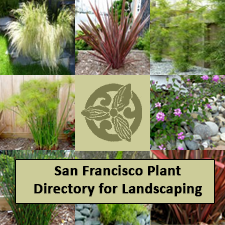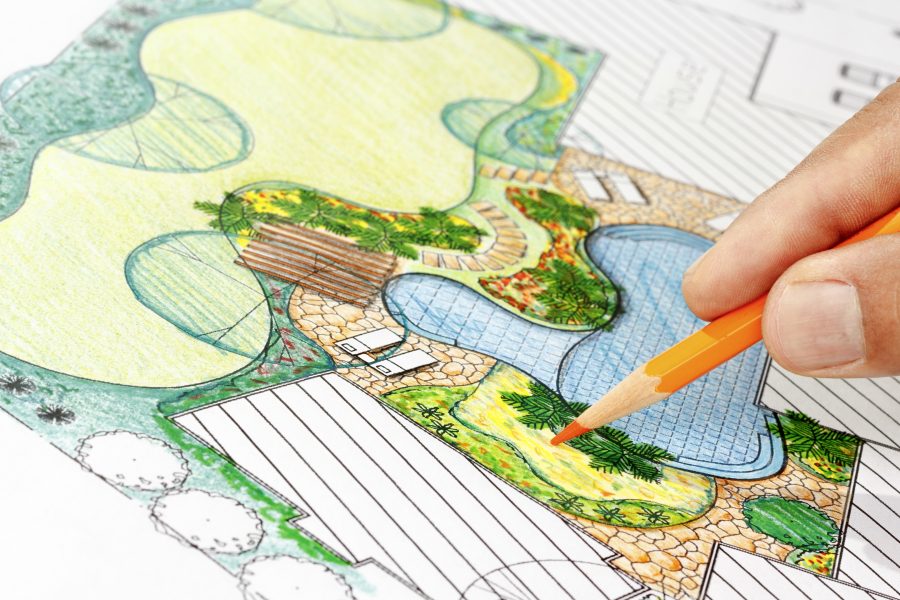
There’s something to be said for do-it-yourself landscaping projects. We get to experience the whole thing time after time: the excitement of the design process; purchasing the plants and mediums; seeing the design come to life; the final mixed feelings of pride in a job well done, joy at the beautiful landscape we’ve created and sadness that the excitement is over. In short, we can understand why some people would prefer to do their own landscaping – and if this is you, more power to you!
However, landscape design is more than just drawing circles on paper and declaring them plants. In fact, some of our clients call us in to fix mistakes they’ve made in a DIY landscaping project.
We want to make sure that, if you’ve decided to DIY, you get the same joy out of your finished landscape that we would if we’d done it for you. With that in mind, read on to learn a few of the most common mistakes people make with their project.
1. Not considering maintenance time and cost.
While this may or may not be the number one mistake, it’s definitely up there in the top ten. A lot of plants take work to keep under control and in top shape. Take, for example, hedge shrubs. Hedges are beautiful and stately but can look like a very bad hair day if they aren’t kept trimmed. The same for many other plants – and plants that aren’t cared for can look worse than a yard full of grass and weeds.
Pro tip: Research the kind of upkeep your new landscape will take and factor it in – either in time or cost to have someone else do the upkeep.
2. Buying plants bigger than your backyard.
It’s easy to look at a young plant and think that it would look great in your new garden. However, keep in mind that-most of the time-you’re looking at a young version of the plant. Mature plants are much more costly than your run-of-the-mill container of mini-shrubs and often take more care to get established (which makes them less cost effective).
Pro tip: Make sure you do your research and find out how big the plant will get before you buy it. You may get caught up in the plant buying process and just start grabbing plants that look pretty. Don’t do this. Do your research and draw up your plant list with the knowledge that all of your plants will stay just exactly where they belong and at the heights you want them at.
3. Ignoring the surrounding hardscape.
For example, will you want a little gazebo? Quality stone pavers, perhaps? Hardscape also includes pools, walkways, patios and fences.
Pro tip: Make sure the plants you chose will work well within the confines of your hardscape. If you’re going to be walking down a small path, for example, you don’t want a plant with thorns hanging over the pathway. Consider how big they’ll get, and whether they’ll hide any other feature you want to remember.
4. Planting trees in the wrong places.
Palm tree or evergreen, it makes no difference. There’s a time to tree, a time to bush and a time to just say no to plants. If you’re planting trees, make sure you carefully think it through. You don’t want to look at transplanting your precious sapling after five years.
Pro tip: Consider if your tree will grow so tall that it blocks out necessities, such as blocking the sun from a sun-loving plant. Will you still have room in your yard after it gets 10 feet around… or 20 feet. As well, remember that their roots will push the ground up. Give your tree room to grow away from the house.



